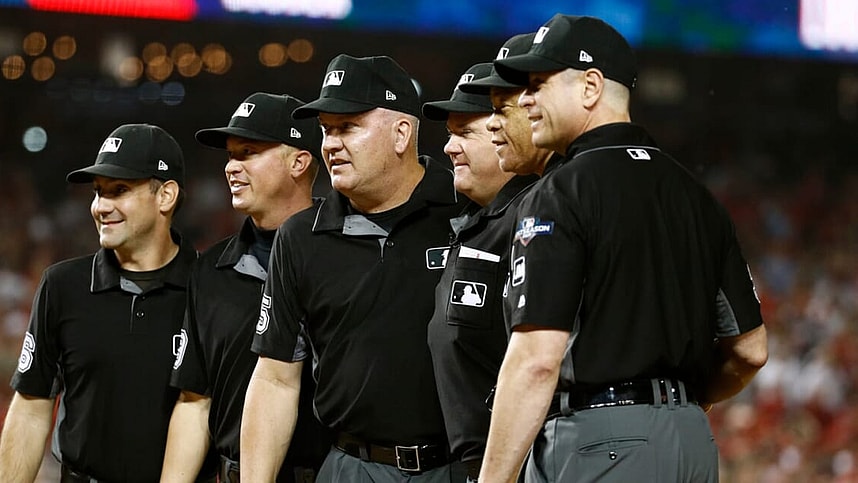
Some of the most hated people in MLB are the umpires, mainly because of the wrong calls they make against your team, sometimes even costing the game. But, most fans don’t know much about the umpires, from how they qualify to how much money they make. So, today I will attempt to reveal those answers.
First of all, if you want to be a major league umpire, your chances of realizing that dream are slim. Many don’t even start with the desire to be an MLB umpire while umpiring little league or at a local high school. For those wishing to advance in the occupation, you will need to have some experience and attend a training school that could cost you upwards of $3,000 to enroll. There are two primary schools: The Minor League Baseball Umpire Training Academy in Florida or the Harry Wendelstedt Umpire School, which should be your best choice for advancement.
Attending school does not assure you of advancing as only 15-20% are selected to go on in their training, and even if you are selected, you have a long road ahead of you. Most umpires will spend nearly a decade in the minor leagues. Just like players, you will start in the lowest ranks of the minor league system. From the rookie leagues to the low A level. If you are good enough, you will eventually advance to the AAA level. Minor league umpires make as little as $2,000 a month to the more advanced earning as much as $3,900 a month. According to the Bleacher Report, umpires also get $66 a day per diem. That is to cover lodging, food, and other expenses. Like players, when lodging is required, most umpires bunk together to save money.
The Major League Umpires Association is charged with promoting minor league umpires to the major leagues. Obviously, the best get promoted first. The exact requirements are vague. Bill Miller has been the President of the union since 2019. Once an umpire reaches the majors, they have it pretty good. A rookie earns $150,000 minimum per year. If you are fortunate enough to be long-tenured like Joe West, you can earn as much as $450,000 per annum. Crew chiefs also can earn more.
Major League umpires earn more than referees in other sports. But it’s not as attractive when you consider they officiate in far more games.
MLB umpires are under constant pressure to get balls and strike called correctly, but if you think they are overly worried, you would be incorrect. MLB is the only sport that umpires are not held accountable for, which angers teams and fans. NBA and the NFL have official scorecards that are open to the public. MLB’s Head of Officiating does provide this similar “service” to umpires, but with no accountability, most just toss them in the garbage. How the umpire association operates is mostly secret.
That smugness by paid officials makes the MLB look amateurish. It is evident that their lack of a standardized home plate “calls” between all umpires. It was considerably easier for umpires to dodge bad calls years ago, but now those bad calls stand out for all to see with instant replay. Also, television broadcasters are more adept with technology to make some of the following comments.
- This is a “pitcher-friendly” umpire due to the large strike zone.
- This is a “hitter friendly” umpire due to the small strike zone compared to other umpires.
- This umpire has a high strike zone, which would be very unfair to a tall player like the Yankees’ Aaron Judge.
- This umpire has an inconsistent strike zone. What was called a ball during the last inning is now being called a strike. The is where apparent favoritism is brought up when calls seem to favor one team or the other.
- This umpire, either by his stance or where he holds his head, is influenced by the catcher moving his mitt to steal a pitch.
Now hopefully, you understand how difficult it is to become a major league umpire and, at the same time, how you will probably have a job until you retire with no or little accountability for your performance. That being said, underperforming umpires are seldom chosen for important, postseason, or World Series games.
Other notes:
Since 1952, umpires have been broken down to four-person crews. In the case of the postseason, the fourth is a backup umpire should one of the umpires be injured during the game. While there are more than 700 players on active rosters, there are only 76 full-time umpires in the Majors. The Commissioner of baseball assigns the crew chief.
MLB umpires have a much to do before any game. Nothing is more important than the baseball; all balls are rubbed up. According to the league’s official rulebook, the home plate umpire in chief is the sole judge of the fitness of all balls used in the game.
Ever since Cy Rigler, one of the first umpires, used his right-hand signals to call strikes, it became the way umpires call strikes and balls. All out calls are traditionally made with the right hand, and it’s the hand used by the home-plate umpire when he points at the starting pitcher while yelling “Play!” to officially begin a game.
More about: MLB New York Yankees